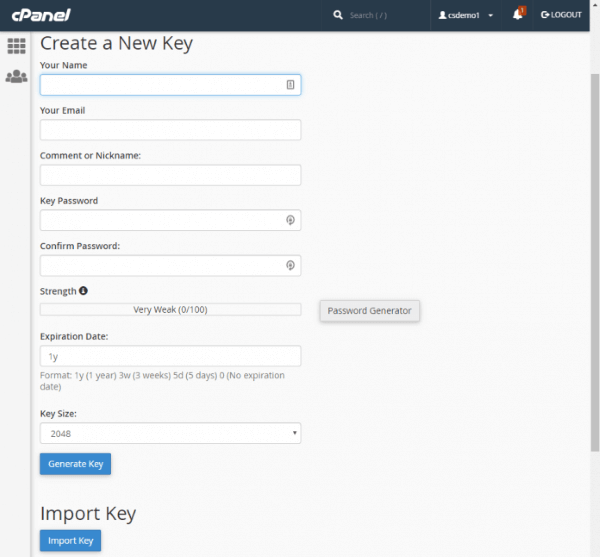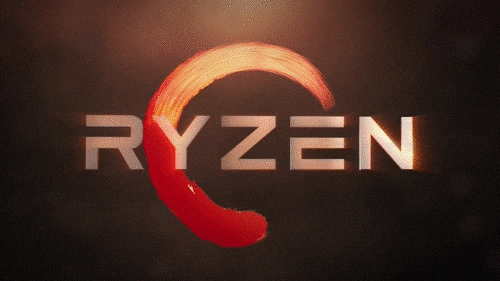The cPanel Encryption interface allows you to create, manage and save GnuPG keys.
GnuPG keys use the public key approach for encryption
Programs that use GnuPG keys encrypt outbound email messages with a public key. In this way only the intended recipient that possess the private key, can decrypt and read the message.

Encryption: When you need to keep your email messages private, encrypting it is one of the safest ways to do this.
Creating a New Key

To add a GnuPG key follow these steps:
1) Enter your information in the Create a New Key text boxes
2) Select the key size, in bits, from the Key Size menu. The key size defaults to 2048
3) Click "Generate Key"
The system defaults to one year (1year) if you do not set your own expiration date
Use a secure password. A secure password may contain uppercase and lowercase letters, numbers, and symbols.
After you create a new GnuPG key, you can add the key to other programs or interfaces that require GnuPG keys, for example, a mail client.
Import a key
To import an existing GnuPG key, follow these steps:
1) Copy and paste the GnuPG key into the available text box.
2) Click "Import"
The system will then add the key to your server
Delete or View Your Keys
After you add a GnuPG key set to the Web Server, you can delete it or view it in the Public Keys or Private Keys tables.
Delete a key
To delete a GnuPGkey, follow these steps:
1) Locate the key that you wish to delete in the Public Keys or Private Keys tables
2) Click "Delete GnuPG Key" for that key. A new interface will appear
3) Click Yes. A success or error message will appear
You must delete a private key before you delete the corresponding public key.
View a key
To view a GnuPG key, follow these steps:
1) Locate the certificate that you wish to edit in the Certificates on Server table
2) Click "View". A new interface will appear that displays the GnuPG key block
3) Click Go Back to return to the Encryption interface.
For more information on how to install encryption keys for your specific mail client, refer to their documentation below:































